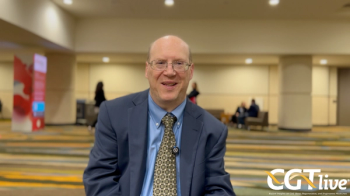
Lentiviral-Based Gene Therapy for LAD-I Improves Clinical Course, CD18 Expression
Typically treated with stem cell transplantation, this lentiviral vector-based gene therapy approach may resolve challenges related to donor availability and post-transplantation complications.
Interim results from a phase 1/2 open-label clinical trial (NCT03812263) of RP-L201 in pediatric patients with severe leukocyte adhesion deficiency-I (LAD-I) demonstrated durable expression of neutrophil CD18 and good safety, as well as improvements in clinical course.
The findings were presented at the 24th Annual Meeting of the American Society of Gene & Cell Therapy (ASGCT), May 11-14, 2021.
A rare disorder resulting from ITGB2 gene mutations encoding for the β2-integrin component, CD18, LAD-I is typically characterized by severe infections, diminished wound healing, and childhood mortality. Typically treated with stem cell transplantation, this approach—although effective—comes with treatment access challenges due to donor availability as well as the risk for graft-versus-host disease.
Investigators led by Donald B. Kohn, MD, of the University of California, Los Angeles, reported the latest data from the RP-L201-0318 clinical trial evaluating the ex-vivo lentiviral vector-based
Kohn and colleagues reported that the therapy has been well-tolerated, with no safety issues reported thus far. To date, 4 patients aged 7 months to 9 years have been treated and followed-up with from 6 weeks to 12 months. Notably, all patients achieved neutrophil engraftment within 5 weeks post-infusion, which included cell doses ranging from 2.8x106 to 6.5x106 CD34+ cells/kg with vector copy numbers (VCN) from 1.83 to 3.8 copies/cell.
The primary end points of the trial include safety, preliminary efficacy, and survival, defined as patients alive at age 2 and at least 1-year post-infusion and not requiring allogeneic hematopoietic stem cell transplantation. Secondary end points include the percent of patients with a neutrophil CD18 expression at least 10% of normal; the percent of patients with a neutrophil VCN of at least 0.1 copies/cell at 6-months post-infusion; incidence and severity of infections; improvement or normalization of neutrophilia; and resolution of related skin lesions or periodontal abnormalities.
In patient 1 (age 9), peripheral blood (PB) polymorphonuclear leukocytes (PMN) CD18 expression was 40% at 12- and 18-months post-treatment (4.2 x 106 cells/kg dose) compared with 47% at 6 months and less than 1% at baseline, with a PB VCN of 1.2. Notably, skin lesions associated with LAD-I present at baseline resolved post-treatment, and no new lesions have been reported. At 6- and 9-months post-treatment, patient 2 (age 3) demonstrated CD18 expression of 23% and 28%, respectively, with PB VCN of 0.75 at 6 months (2.8 x 106 cells/kg dose). Patients 3 and 4 (ages 7 months and 2 years, respectively) had a PB PMN CD18 expression of approximately 70% and 51% 3-months post-treatment (4.3 x 106 cells/kg dose and 6.5 x 106 cells/kg dose), respectively, with PB VCN levels similar to the first 2 patients at 6 weeks. Notably, no new infections have been reported in any of the patients post-infusion.
“We are very pleased to report that a second patient is nearing survival at 1-year post-treatment, the primary outcome measure for the Phase 2 portion of the study. In all patients treated, CD18 expression has substantially exceeded the 4% to 10% threshold associated with survival into adulthood, with consistent peripheral blood vector copy number levels. Improved disease-related skin lesions, absence of new infections post-treatment, and no further requirements for prophylactic anti-infectives were also observed in both Phase 1 patients with prolonged follow-up. Initial evidence of engraftment and phenotypic correction was observed in two additional patients with shorter follow-up,” Jonathan Schwartz, MD, chief medical officer and senior vice president of Rocket Pharmaceuticals, said in an earlier statement. “These updates move us one step closer towards BLA/MAA filings in the US and Europe and eventual commercialization of a potentially curative option for the children facing this truly devastating disease.”
Rocket intends to report additional results from phase 2 later this year.
Newsletter
Stay at the forefront of cutting-edge science with CGT—your direct line to expert insights, breakthrough data, and real-time coverage of the latest advancements in cell and gene therapy.

















































